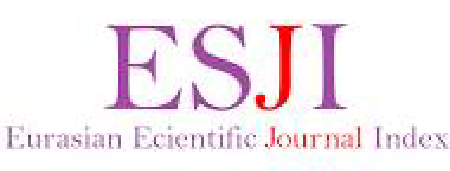THE USE OF REPETITION AND PARALLELISM FOR EMPHASIS IN ENGLISH AND UZBEK SOCIETAL NEWS
Abstract
This article explores the use of repetition and parallelism as stylistic devices in English and Uzbek societal news texts. Drawing on a bilingual corpus of selected articles from reputable news platforms, the study identifies and analyzes the frequency, functions, and emphasis-related effects of these devices. The research highlights both universal patterns and language-specific features that characterize the use of repetition and parallel constructions in journalistic discourse. The findings contribute to a deeper understanding of how linguistic form shapes the communicative impact of news writing in both languages.
References
1. Arutyunova, N.D. Theory of Metaphor in Language and Thought. – Moscow: Nauka, 1990.
2. Bekmurodov, M. O‘zbek matbuotidagi uslubiy vositalarning lingvistik xususiyatlari. – Toshkent: O‘zbekiston Fanlar Akademiyasi, 2012. P. 45–51.
3. Crystal, D. The Cambridge Encyclopedia of the English Language. – Cambridge: Cambridge University Press, 2003.
4. Fairclough, N. Language and Power. – London: Longman, 2001.
5. Galperin, I.R. Stylistics. – Moscow: Higher School Publishing House, 1977. P. 125–135.
6. Hudoyberganova, D. O‘zbek tilida matbuot uslubining zamonaviy ko‘rinishlari. – Toshkent: O‘zbekiston Davlat Jahon Tillari Universiteti, 2016.
7. Kukharenko, V.A. A Book of English Stylistics. – Moscow: URSS, 2005.
8. Lakoff, G. & Johnson, M. Metaphors We Live By. – Chicago: University of Chicago Press, 1980.
9. Nazarova, M. “Linguistik uslubiy vositalar va ularning media matnlardagi funksiyalari” // Filologik tadqiqotlar, №3(7). – Toshkent, 2021.
10. Skrebnev, Y.M. Fundamentals of English Stylistics. – Voronezh: IST Publishing, 2003.
11. Tursunova, G. Matbuot tilining lingvistik va uslubiy xususiyatlari. – Toshkent: Turon-Iqbol, 2015. P. 66–72.
12. van Dijk, T.A. Discourse and Context: A Sociocognitive Approach. – Cambridge: Cambridge University Press, 2008.
13. Wodak, R., & Meyer, M. Methods of Critical Discourse Analysis. – London: Sage Publications, 2009.






















